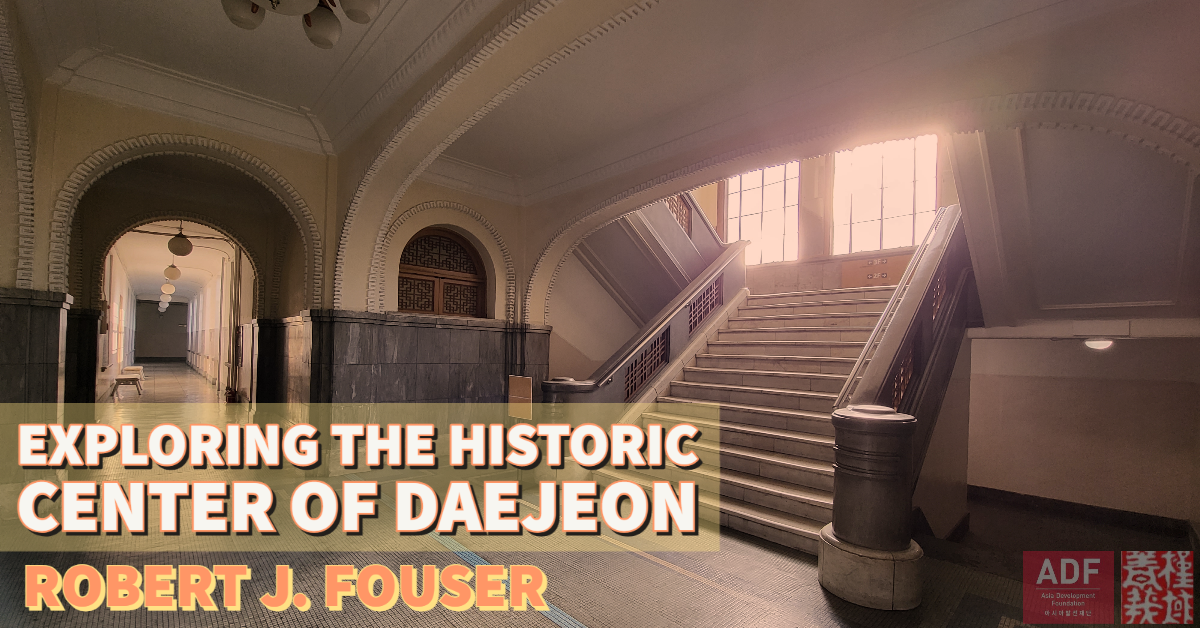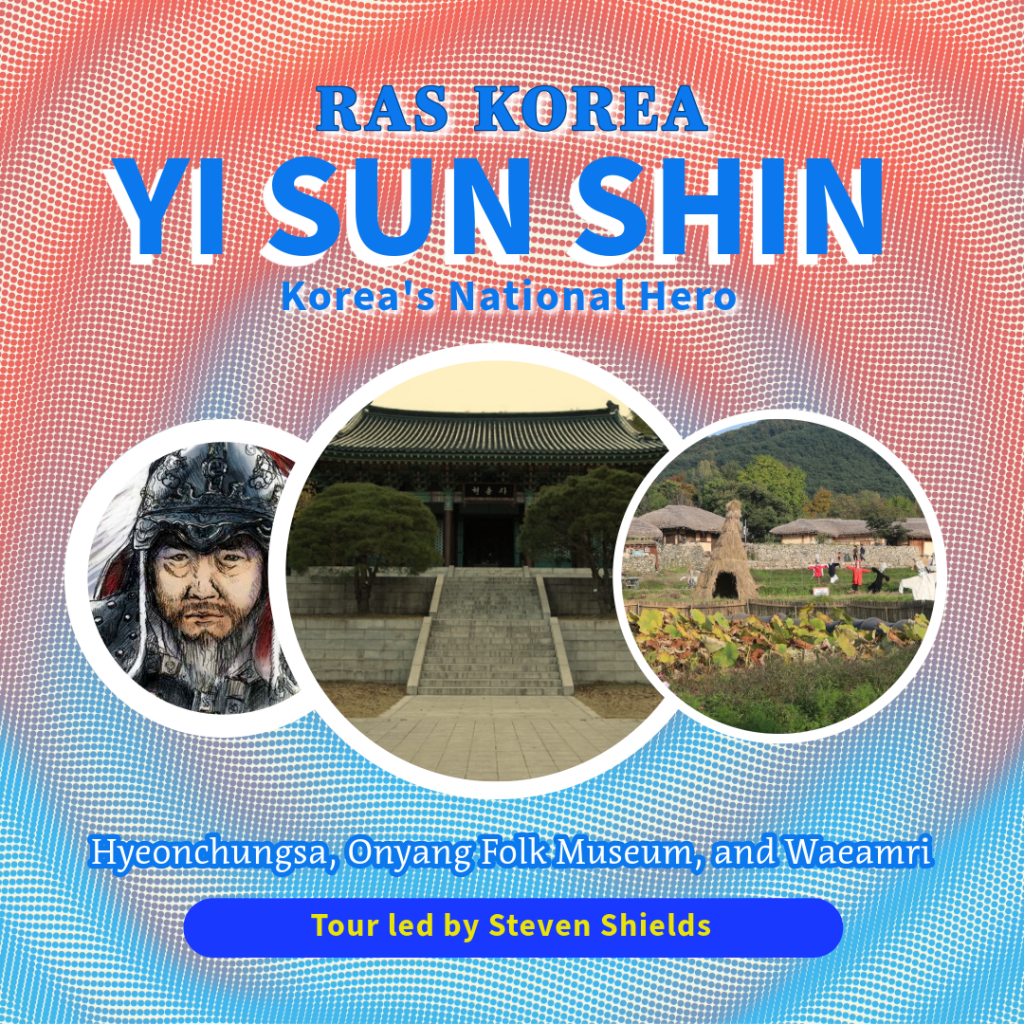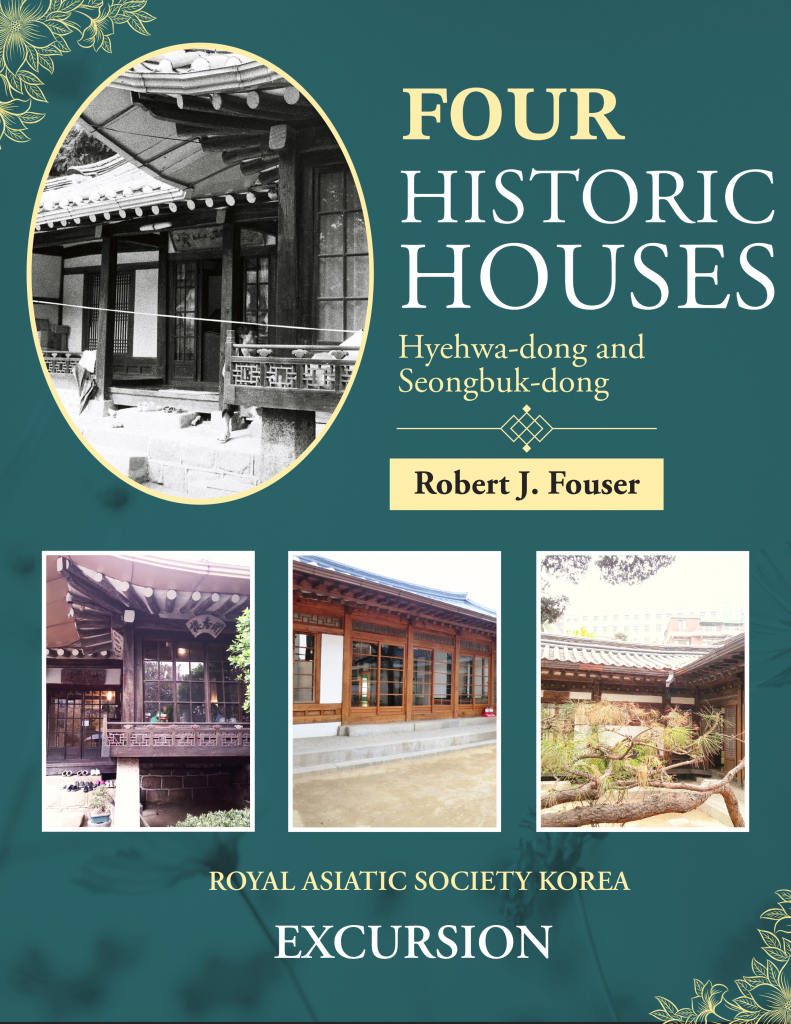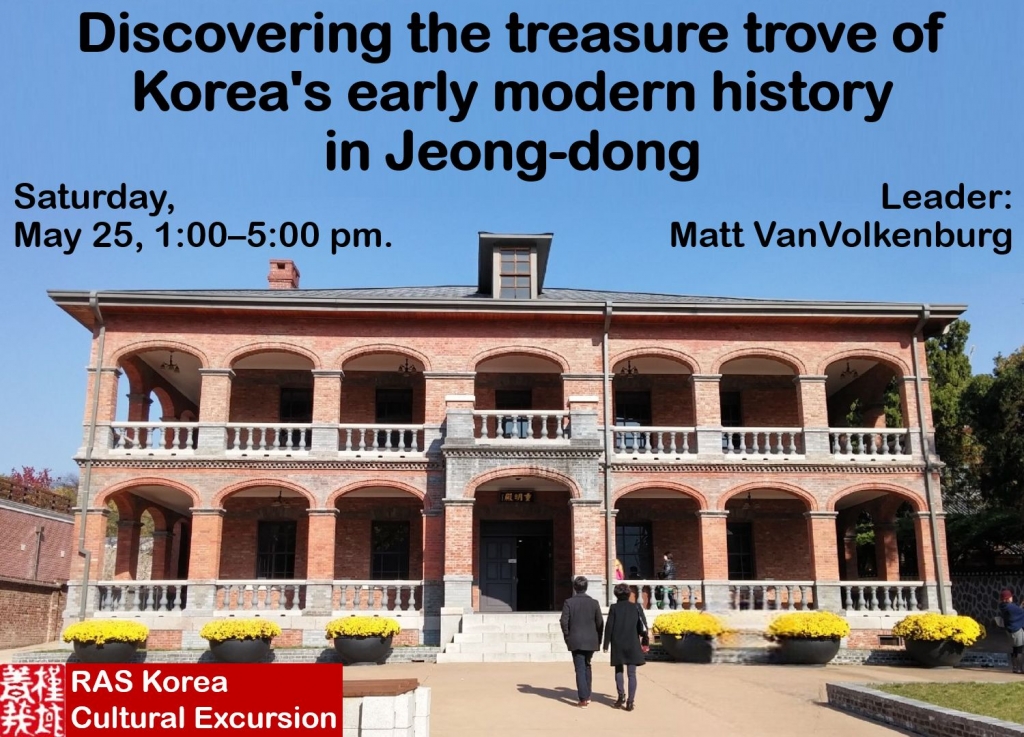

[Cultural Excursion] Exploring the Historic Center of Daejeon
November 20, 2022 @ 12:00 pm - 5:00 pm KST
Exploring the Historic Center of Daejeon
LEADER: Robert J. Fouser
DATE: Sunday, November 20: 12:00-17:00
DESTINATION: Daejeon City Center
COST: 30,000 won for members; 35,000 won for non-members
MEETING POINT: Outside at the bottom of the escalator from Daejeon Station Exit #5. A Lotteria is visible behind the windows next to the escalator.
TRANSPORTATION:
From Seoul to Daejeon
KTX at Seoul Station (It takes 1 hour), OR
Express Bus at Central City Terminal in Express Bus Terminal Station (3호선 고속버스터미널역) (It takes 2 hours).
In Daejeon
From the Express Bus Terminal(대전복합버스터미널), you take a taxi to the Daejeon Station (대전역) and it takes 10 to 15 minutes.
REGISTRATION:
RSVP by November 18 (Friday) by clicking HERE with payment of the fee via bank transfer. Please register one RSVP at a time.
☞Payment to be remitted to the following account:
SHINHAN BANK ACCOUNT # 100-026-383501 (RAS-KB)
*Reservation is not confirmed until payment has been received by RAS Korea in advance of the event.
DESCRIPTION:
Daejeon developed as a transportation hub and administrative center during the Japanese colonial period (1910-1945). The city was laid out on a grid pattern with wide main street connecting the main railway station and the provincial government office. Areas closest to the main street were reserved for official buildings and businesses, while areas further out were mainly residential. In 1944, Daejeon was the 14th largest city in Korea with a population of 76,000 people; it ranked 6th among cities in what would later become South Korea.
Since then, Daejeon has grown many times over, but the outlines of the Japanese colonial city remain clear. Like other Korean cities, the development of new commercial and residential areas beginning in the 1990s caused a hallowing out of the historic center of the city. And like other cities, the city government is trying to revive the city center. On this walk, we will explore the city center from two perspectives: 1) historic sites related to the colonial period; and 2) recent urban regeneration efforts.
We will begin our walk at Daejeon Station and start walking up Jungangno Street, the wide main street. Our first stop will be the old Korea Development Bank Building, which was built in 1937. Our next stop will be the Mokcheokgyo Bridge, which was one of the early regeneration efforts in the city. From there, we will stop at At, a book cafe and meeting room space developed by a professor of architecture in Daejeon. We will explore the nearby redevelopment district and make out way back to Jungangno Street via Seonhwa-dong.
Toward the end of Jungangno Street, we will explore the former Chungnam Provincial Office, which was built in 1932 and used by the government until 2013. The building now houses Daejeon Modern and Contemporary History Exhibition Hall but will be repurposed into a branch of the National Museum of Modern and Contemporary that is scheduled to open in 2026. Several subsidiary buildings on the site have been renovated recently and are used as part of urban regeneration efforts. Our next stop will be a complex of houses built for high-ranking government officials during the colonial period. The house are excellent examples of the 1930s Japanese residential architecture and were converted into art spaces after the provincial government moved.
Next, we will walk toward the Daeheung-dong area, which was a residential neighborhood during the colonial period. Parts of the area have developed into a trendy café area while other parts are largely abandoned in preparation for demolition and redevelopment. Some redevelopment projects have been completed and will look at how they affect the cityscape. We will stop at the old auditorium of Daejeon Girls’ Middle School, which was built in 1937 and has been converted into an art gallery. Nearby is the Daeheung-dong Cathedral, which was built in 1960 and still dominates the neighborhood skyline. Across the street, we will stop at the National Agricultural Products Quality Management Service, which was built in 1958 and was converted into branch of the Daejeon Museum of Art in 2008.
The last section of our walk goes through the commercial heart of Daejeon, which includes examples of city urban regeneration projects. We will stop at Dadareuda, an independent bookshop, and hear the owners’ thoughts on urban regeneration in Daejeon. We will then make our way through the Central Market on our way back to Daejeon Station. The excursion will last until about 17:00 and end at Daejeon Station. Participants may join Robert afterwards for a coffee or an early dinner (not included in the excursion fee). The walk is mostly flat, but comfortable walking shoes are recommended.
** As our excursion leaders are often too focused on leading to take photos of their own tours, we hope that you will consider sharing with us a few photos from the excursion, or write a sentence or two about your experience that we could use in future promotional efforts on behalf of the society. Any quotes, photos, videos, or other material would be used with attribution.



